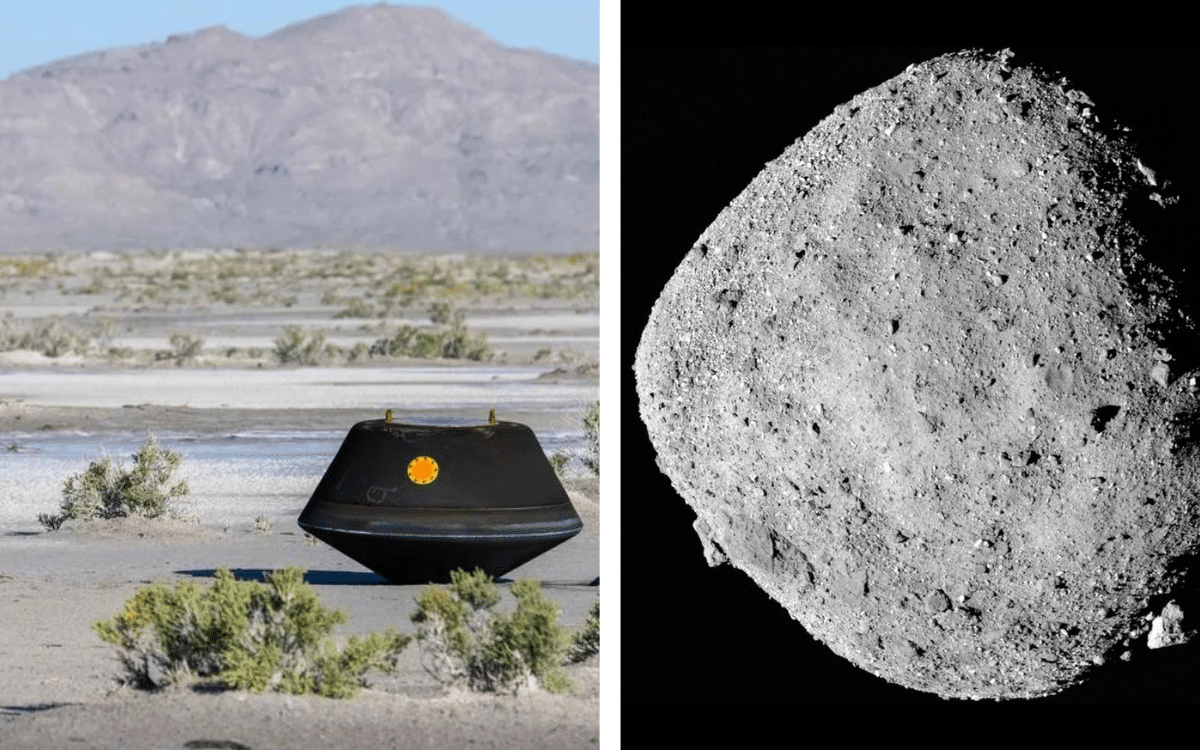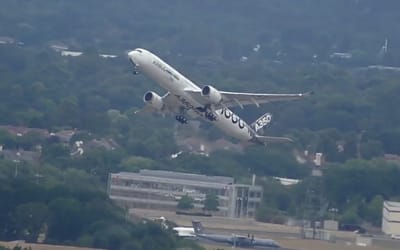NASA asteroid sample set to shed light on the solar system’s origins lands safely on Earth
Published on Sep 25, 2023 at 8:39 PM (UTC+4)
by Amelia Jean Hershman-Jones
Last updated on Sep 26, 2023 at 12:32 PM (UTC+4)
Edited by
Kate Bain
After arriving safely back to Earth from 4 billion miles away, the NASA OSIRIS-REx capsule has touched down with samples of the Bennu asteroid.
“We’re all breathing a huge sigh of relief,” said Jim Garvin, chief scientist of NASA Goddard Space Flight Center.
He described its 4-billion-mile, seven-year journey as a “touchdown for science”.
READ MORE! Scientists explain bizarre ‘question mark’ in space spotted by Webb Space Telescope
The canister, which landed in the Utah desert on Sunday (24 September), contained 250g of rock debris from asteroid Bennu.
Collected 200 million miles away, these are the first samples the space agency’s returned from an asteroid in deep space.
The mission first launched in 2016 before arriving at Bennu in 2018, with samples being taken from the asteroid in 2020.
The entire mission cost a whopping $1 billion.
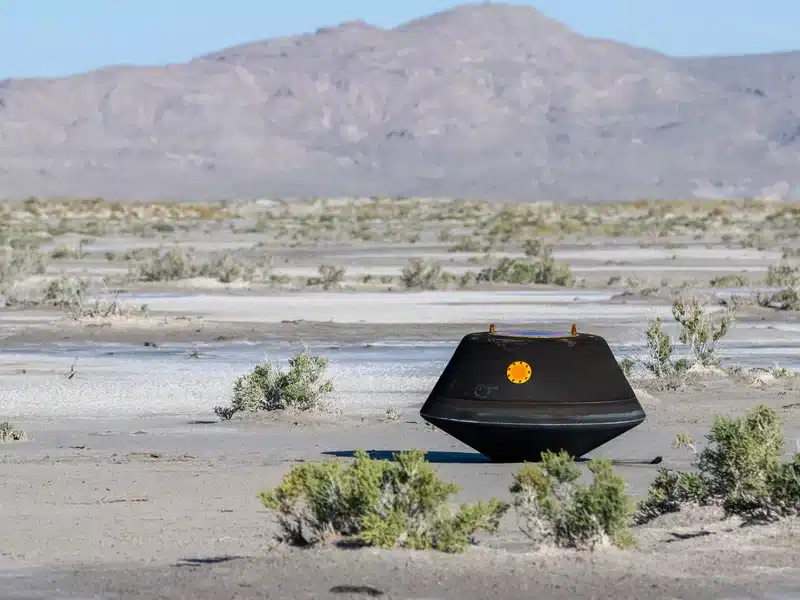
This weekend, the probe released samples from 63,000 miles above the Earth’s surface – four times higher than planned.
However, the canister appeared to have landed safely according to recovery teams.
Scientists are hopeful they can answer important questions about the beginnings of our solar system and life on Earth.
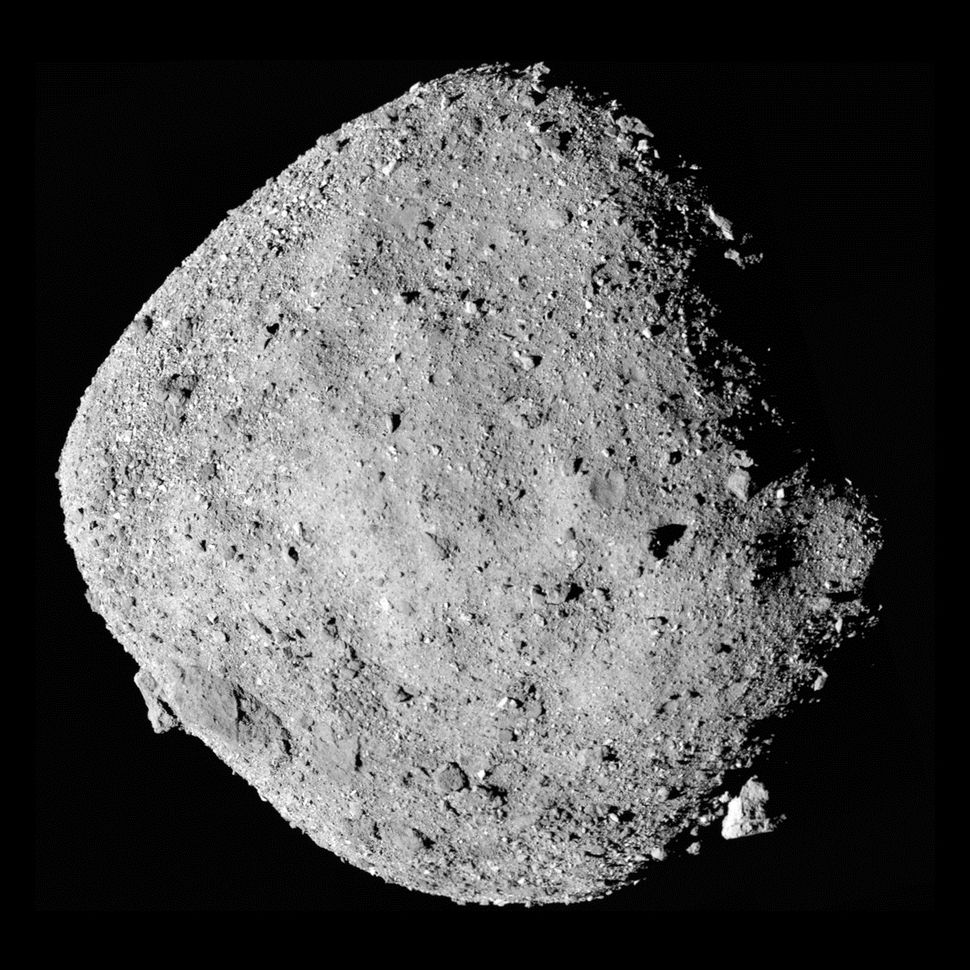
“For the first time in history, we brought goodies back home from this kind of object. This is so huge and we’re all breathing a big sigh of relief,” Garvin said.
The OSIRIS-REx capsule reached speeds of up to 27,000 mph as it plummeted back down to Earth.
Its heatshield experienced temperatures as high as 5,300 degrees Fahrenheit as it reentered Earth’s atmosphere.
The capsule’s descent to the ground took 10 minutes from reentry, and officials had to wait for it to cool down before they could approach it.
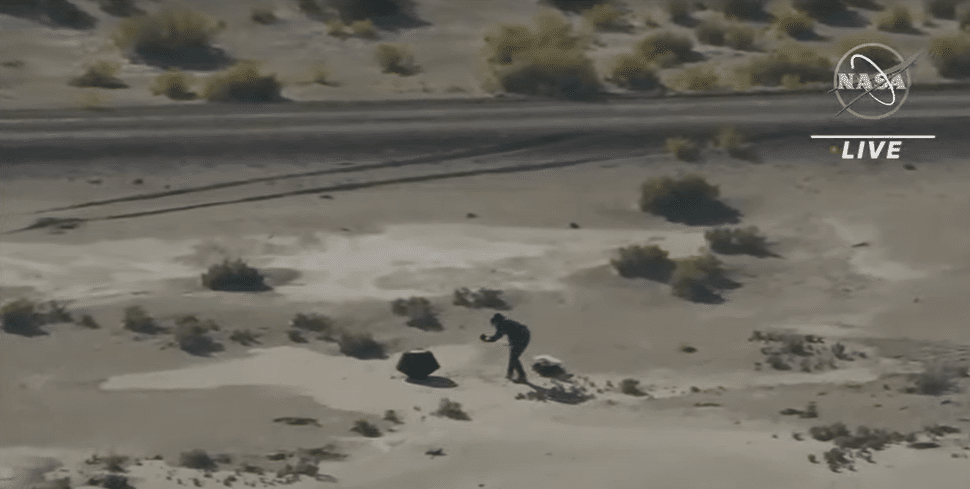
OSIRIS-REx was then airlifted by helicopter to a safe space to be opened.
It will then be transported to the newly-built NASA Johnson Space Center in Houston, Texas.
There, it will be divided up by the Astromaterials Research and Exploration Science division at NASA.
The space agency will keep 70 percent of the sample and plans to analyze it for many years.
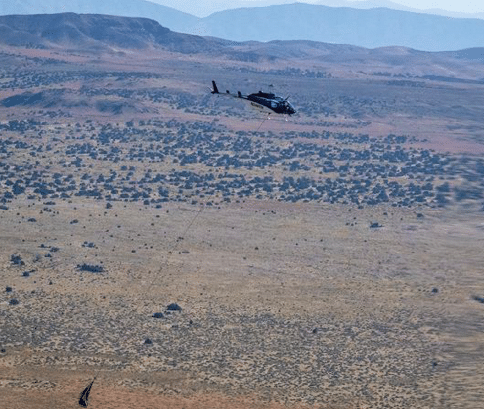
25 percent will be shared between 35 other facilities from around the world.
Watch this space (pun fully intended) for more on NASA’s findings from the collected asteroid samples.
DISCOVER SBX CARS: The global premium car auction platform powered by Supercar Blondie
All Supercar Blondie contributors undergo editorial review and fact-checking to ensure accuracy and authority in automotive journalism. After gaining her BA Hons in French and English at the University of Nottingham, Amelia embarked on a vocational diploma from the National Council for the Training of Journalists (NCTJ). This led to numerous opportunities, from interning at Vogue to being on the small team that launched Women’s Health magazine in the UK, which was named the PPA Consumer magazine of the year for three years running. As Health, Beauty and Fitness editor, Amelia personally received a Johnson & Johnson Award and was shortlisted for both PPA and BSME titles. Since then, Amelia has created content for numerous titles and brands, including the Telegraph, 111 Skin, Waitrose, Red magazine, Stylist, and Elle, as well as being Head of Content at Vitality and Editor in Chief at INLondon magazine. “My superpower is translating technical jargon about the mechanical workings of a supercar into a relatable story you’ll want to share with your friends after you’ve read it.” After joining the SB Media family as a senior journalist in September of 2023, Amelia’s role has evolved to see her heading up the SEO output of the editorial team. From researching the most ‘Google-able’ key terms to producing evergreen content - it’s been a time of hard work, growth, and success for the editorial team and the Supercar Blondie website. “I like to think of myself as a ‘method journalist’. In other words: I live and breathe whatever I am writing about. When writing about fitness, I trained as a personal trainer, and as a beauty editor, I completed an ‘expert’ in scent diploma with the Fragrance Foundation. “During my tenure at Supercar Blondie, however, I did something I never thought possible: I passed my driving test at the age of 36. One day I’d love to train as a mechanic to better understand what happens under the hood, too. “My sweet spot is providing readers with a ‘takeaway’ (read: something new they didn’t know before) after reading every one of my stories. While I don’t claim to be an expert in the automotive world, I know the experts and bodies in the field to rely on to provide our readers with an informative and thought-provoking story every time they visit the site.”
